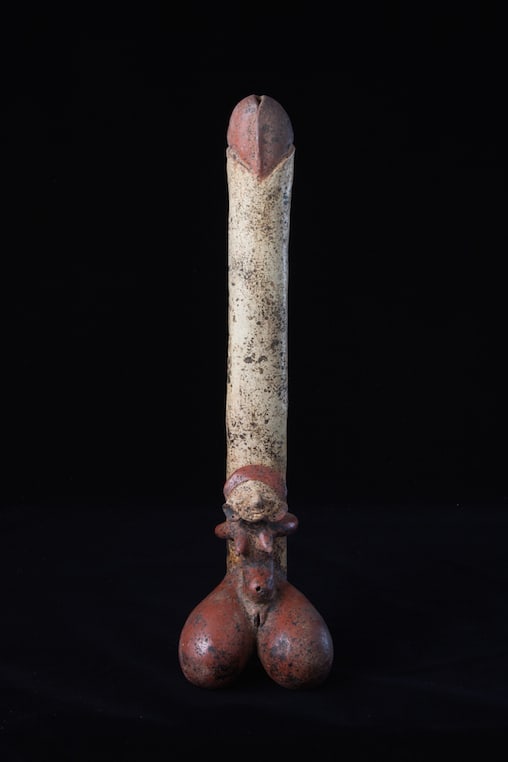Chinesco Style (Type C) Nayarit Terracotta Flute in the Form of a Phallus, 300 BCE - 300 CE
Painted Terracotta
53 x 14 x 14 cm
20 7/8 x 5 1/2 x 5 1/2 in
20 7/8 x 5 1/2 x 5 1/2 in
X.0204
This remarkable flute is much more than a simple musical instrument. Although we will never know what melodic tunes were once played utilizing it, we can assume that notes and...
This remarkable flute is much more than a simple musical instrument. Although we will never know what melodic tunes were once played utilizing it, we can assume that notes and rhythms were intimately linked to ancient fertility ceremonies. The shapes of the flute suggests as much. The flute stands upright, resting on the join of the white mouthpiece and the two large red testicles. A long white shaft rises forth from the testicles, and a red phallic head peeks out at the top, complete with incised lines that define the form. The music would have sounded out of a hole in the top, so that musical notes instead of semen would have been the life giving force emitted by this phallic flute. A pregnant woman, sculpted with the wide, round face characteristic of the Chinesco style, is seated on the join of the testicles to the shaft. However, the artist has ingeniously merged her torso into the round testicles, so that they in turn function as her thighs and she appears to be seated, leaning her back up against the shaft, holding it in place with her arms. While aesthetically pleasing, this unique composition also profoundly influences the interpretation of the piece. Here, the carriage of life as symbolized by the pregnant woman’s rotund thighs is the same as the seat of the male seed as represented by the testicles. In effect, the artist has depicted the concept of human fertility and copulation without actually representing the act.



